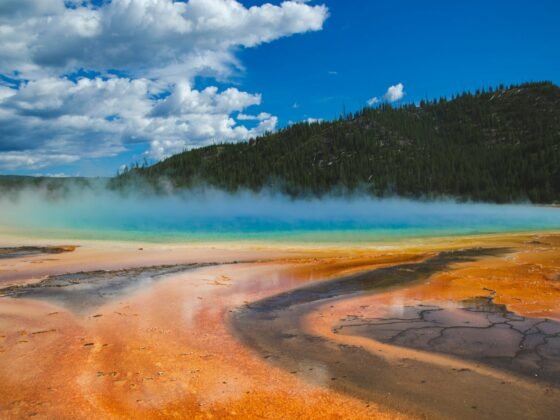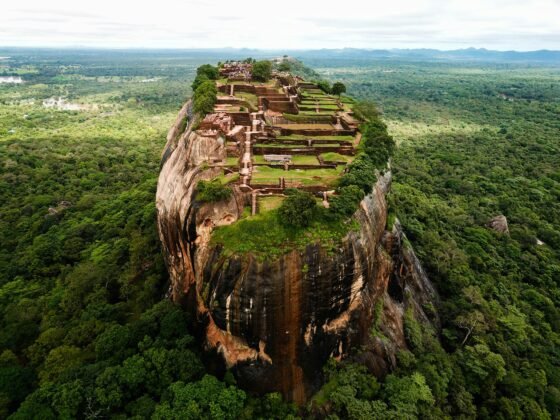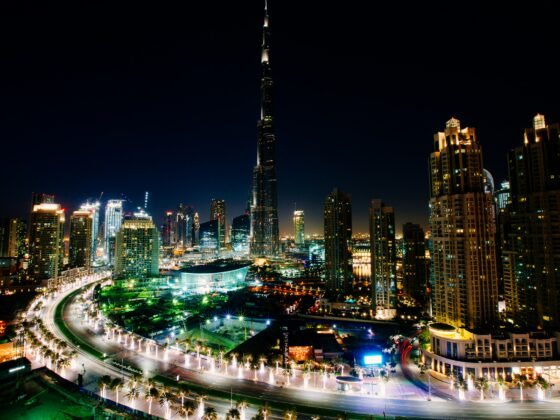World Cup Countdown: just 2 months to go! This summer there is only one place to be*: hot and happening Brazil will take center stage as it hosts the FIFA World Cup between 12 June and 13 July 2014. Twelve cities will collectively host the mega-event, some already world-famous and some up and coming destinations…
*alternatively a nice comfortable sofa with a few ice-cold beverages will have to suffice!
Brasilia
An urban planners dream, Brasilia was ushered in as the new capital in 1960, following a frenzied four year construction process which saw a whole city emerge in the space of just a few years. Behind many of the iconic 1960s style buildings is the local architect Oscar Niemeyer, whose inspired creations have earned Brasilia UNESCO status. Built on a carefully executed layout, from above this enigmatic city resembles the wings of a plane. And did you know that Brasilia hosted the highly coveted American Capital of Culture honour in 2008?
What to see and do in Brasilia: Cultural sights abound (especially if you’re partial to 60’s architecture) – don’t miss the superb Brasilia Arts Museum, admire the deeply symbolic Praça dos Três Poderes (Three Powers Square) and admire the serene Palácio da Alvorada (Palace of Dawn), one of Niemeyer’s many creations. More info.
Brasilia stadium facts: Built in 2012 the Estadio Nacional Mané Garrincha can seat 68,009 spectators, making it the second largest stadium in the 2014 World Cup tournament. It will host 7 matches during the tournament, opening with Switzerland v Ecuador on 15 June 2014.
Sao Paulo
The southeast region of Brazil is typified by brochure-worthy beaches, magnificent mountains and lush Atlantic rainforest and its home to some of the country’s most pulsating cities. It’s here that you’ll find Sao Paulo, the self-styled gastronomic capital, where gourmet street food is the norm. And whilst Rio has the cosmopolitan beachlife, Sao Paulo undoubtedly has the history and heritage side covered!
What to see and do in Sao Paulo: Eat, eat and eat, but seriously Sao Paulo boasts enough restaurants to eat out at a different place every night for 34 years! Then head downtown, to Centro which is brimming with breathtaking baroque, colonial and neoclassical architecture. Hunker down for a spot of people-watching in the frenetic Praça da Sé and take in the 14 imposing towers of the mesmerising Catedral da Sé. More info.
Sao Paulo stadium facts: The Arena Corinthians has been newly built this year and can seat 65,807 fans; it’s also the home to Sao Paulo’s best-supported team of Sport Club Corinthians Paulista. It’s here that that the Opening Match of the World Cup 2014 will be played, where Brazil v Croatia on 12 June 2014. In total 6 matches will be played here, including one of the semi-finals. The Arena Corinthians will also host events during the upcoming Summer Olympics 2016, as part of the Football Tournament.
Rio de Janeiro
If there was ever a city where its reputation came before it; Rio de Janeiro more than plays up to its sultry reputation. Dubbed the ‘cidade maravilhosa’ – Marvelous City, Rio boasts more iconic landmarks than anywhere else in South America. First landed in 1502 by the Portuguese explorer Gaspar de Lemos, travellers have long been fascinated by this city, one of the new Seven Wonders of the World.
What to see and do in Rio de Janeiro: Phew, where to start? Ascend the almost-regal Corcovado Mountain for a close-up glimpse of Brazil’s most famous icon, the 38 meter tall Art Deco Cristo Redentor. Explore the immense Tijuca National Park; the largest urban rainforest on earth is teeming with endemic wildlife which seemingly represent every colour of the rainbow, and then some. Spot Capuchin monkeys, toucans and the odd Quatis (Brazilian raccoon). And of course, no trip to Rio would be complete without feeling some of that oh-so famous sand beneath your toes – yes folks, we’re talking Ipanema Beach and Copacabana Beach. Both world famous and both buzzing with beautiful people 24/7. More info.
Rio de Janeiro stadium facts: Estadio do Maracana was especially built for the 1950 World Cup and will host seven matches (the most of all the stadiums) including the thrilling World Cup Final on 13 July. And with a capacity of 76,804, the Maracana is the largest football stadium in Brazil.
Salvador de Bahia
The original capital city of Brazil reigned supreme from when the Portuguese arrived here in 1549 right through to 1763. Salvador is an incredibly diverse city, rightly proud of its rich heritage of historic monuments and buildings. It’s here that the sizzling Afro-Brazilian culture of most evident, from the traditional rituals, ancient traditions, sublime food and hypnotic music.
What to see and do in Salvador de Bahia: Number one hangout spot is undoubtedly Pelourinho, the pure cultural heart of the city and a UNESCO World Heritage Site. If the faded colonial elegance of the once lavishly coloured houses doesn’t steal your hear, then the glut of seriously breathtaking monuments will. Seventeenth century Portuguese architecture is evident throughout Pelourinho, from the imposing colonial houses, magnificent churches, engaging museums and trendy art galleries. Salvador is also a great place to familiarise yourself with the ancient martial art of capoeira, which expertly fuses dance and defence moves. More info.
Salvador de Bahia stadium facts; Arena Fonte Nova boasts a newly built stadium (replacing the former Estadio Octavio Mangabeira), capable of seating 52,048 fans, who will be treated to six matches this summer, kicking off with Spain n Netherlands on 13 June 2014.
Fortaleza
The northeast region of Brazil is brimming with historic cities, steamy summers, vast sand dunes and fragrant coconut groves. And the fifth largest city of Fortaleza, founded in in 1726, boasts superb beaches, a lively party atmosphere and intriguing cultural sights. And as ‘Fortaleza’ means ‘fortress’ in Portuguese, you can expect plenty of historical sites across this vibrant city, from ancient colonial forts, fascinating museums and lush sprawling parks. Make the journey here and you’ll be greeted with unique folklore, traditional crafts and mesmerising heritage.
What to see and do in Fortaleza: Both the Dutch and Portuguese called Fortaleza home over the centuries, resulting in a rich cacophony of landmarks, from churches, museums and galleries. When you’re not soaking up the sun on one of the many beaches along the glorious 34km long stretch of coastline along Brazil’s Ceará state, there are also plenty of cultural sights. Don’t miss the engaging Cachaca Museum, catch a show at the ornate Jose de Alencar Theater and admire the French designed Gothic-Roman Fortaleza Cathedral. More info.
Fortaleza stadium facts: Estádio Castelão was initially constructed in 1973 and is home to the two local teams of Ceara Sporting Club and Fortaleza Esporte Clube. In total the renovated arena can accommodate 64,846 people. Castelão will host 6 World Cup matches, starting with Uruguay v Costa Rica on 14 June 2014.
Belo Horizonte
Better known as Beagá, Belo Horizonte is Portuguese for ‘beautiful horizon’. This sizzling city served as the capital following the independence of Brazil in 1822. The newer neighbourhoods consisting of sprawling avenues and ornate squares and opulent parks were designed back in the 1940s by none other than the architect Oscar Niemeyer.
What to see and do in Belo Horizonte: Swing by the interesting Palacio Das Artes gallery, chill out in the serene Parque Serra Do Curral and stop for a spot of people watching at the beautiful Praca Da Liberdade.
Belo Horizonte stadium facts: 62,547 fans can soak up the World Cup atmosphere within the renovated Estádio Mineirão this summer. Six matches will be played here, starting on 14 June 2014 with Colombia v Greece.
Manaus
Nestled in the heart of the mighty Amazon is the city of Manaus; the gateway into the lush Jaú National Park. Manaus is a bustling city which also reveals its own unique heritage and culture set against a heady backdrop of the local equatorial climate.
What to see and do in Manaus: Admire the magnificent Teatro Amazonas whose crowning glory is a mosaic dome, tiled in the colours representing the Brazilian flag. Explore the wildlife-rich Archipelago of Anavilhanas by boat. And head out onto the Rio Negro River which meets with the Rio Solimões to produce the most famous waterway in the world; the Amazon River. Both rivers are a different colour and flow for 18km side by side, yet never mix, making for an intriguing sight! More info.
Manaus stadium facts: The newly constructed Arena da Amazonia can seat 42,374 fans and will host four matches, including England v Italy on 14 June 2014.
Curitiba
The capital of Paraná state was also the joint host of American Capital of Culture in 2003 (along with Panama City). So, as you’d expect, this diverse city boasts a pulsating cultural life, with plenty of sights and activities to keep even the most hardened traveller entertained.
What to see and do in Curitiba: Learn more about the great architect within the Museu Oscar Niemeyer, admire the imposing Metropolitan Cathedral and chill out in the serene Jardim Botanico de Curitiba.
Curitiba stadium facts: Dating back to 1914, the Arena da Baixada kicks off its four match run this summer with Iran v Nigeria on 16 June 2014, to a maximum crowd of 42,968.
Recife
Located on the very northeast coast of Brazil is the city of Recife – Portuguese for ‘reef’ – which is known for its impressive beaches, lively carnival scene and a rich architectural legacy, hence the nickname ‘the Brazilian Venice’.
What to see and do in Recife: Explore the museum, gallery and carefully-manicured park of the Instituto Ricardo Brennand, soak up the opulence of Church and Monastery of Sao Bento and learn the history of the Kahal Zur Israel Synagogue.
Recife stadium facts: The newly built Itaipava Arena Pernambuco can seat 46,160 people and World Cup fever kicks off on 14 June 2014 with Ivory Coast v Japan.
Porto Alegre
Subtropical Porto Alegre is capital of the Rio Grande do Sul state and was founded in 1742 from settlers from the Portuguese Azores Islands. Immigrants from all over Europe arrived from Portugal, Italy, Germany and Poland, lending the city a very European air.
What to see and do in Porto Alegre: Admire the neoclassical Sao Pedro Theatre both inside and out, make up your own mind about the Fundacao Ibere Camargo Museum and don’t miss the majestic Metropolitan Cathedral.
Porto Alegre stadium facts: Some 51,300 football fans will pack out the Estádio Beira-Rio which starts its five match run on 15 June 2014 with France v Honduras.
Natal
The impressive city of Natal (Portuguese for Christmas) is dominated by the prominent Three Kings’ Fort. Built around vast dunes and great swathes of beaches, Natal experienced a boost in growth during the 1980s and international travellers caught on to the destination.
What to see and do in Natal: Admire the rich geology of the intriguing Dunes Of Genipabu, spot dolphins off the Barra de Tabatinga beach and take in the religious art in display within the Santo Antonio church and museum.
Natal stadium facts: The newly built Arena das Dunas hosts four matches of the FIFA World Cu tournament starting with Mexico v Cameroon, where 42,086 spectators will soak up the atmosphere.
Cuiaba
The smallest city to co-host the World Cup 2014 tournament, Cuiaba is the capital of Mato Grosso state in the precise heart of South America and equidistant from both the Atlantic and Pacific oceans. Cuiaba was founded 1719 at the peak of the Brazilian Gold Rush, indeed the city center boasts several historical buildings from that period, which now form part of the national heritage sites.
What to see and do in Cuiaba: Spot endemic wildlife in the Matogrossense Wetlands National Park, admire the ornate interior of the Our Lady of Rosario and Sao Benedito Church and prepare to be wowed by the myriad of colourful bird species within the Pantanal Norte.
Cuiaba stadium facts: Arena Pantanal, capacity 42,968, is currently still under construction and will be ready to host its first match on 13 June 2013; Chile v Australia.
And all eyes are on the national football team of Brazil who were rather unceremoniously knocked out of the 1950 World Cup (the first time Brazil hosted the event) – place your bets now.
Map Credit: Wikitravel
Image credits; 2; José Cruz/Agência Brasil CC BY 3.0 BR, 5; Fernando Hidalgo Molina CC-A-2.0, 6; Ricαrdo CC-A-2.0, 7; Edson Hwang CC BY-SA 3.0, 8; Pontanegra CC-ASA-2.5, 9: Morio CC BY-SA 3.0, 10; A. Júnior CC BY 2.0











